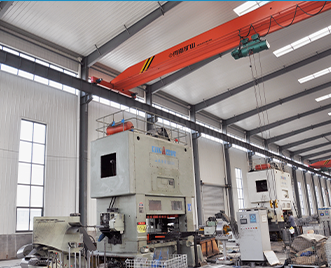Dec . 05, 2024 16:45 Back to list
water-filled submerged pump for efficient fluid transfer and reliable performance in various applications
Water-Filled Submersible Pumps Efficient Solutions for Various Applications
Water-filled submersible pumps are a crucial component in numerous applications, ranging from dewatering construction sites to agricultural irrigation and even in municipal water systems. Unlike traditional pumps that operate in dry conditions, water-filled submersible pumps are designed to function when submerged in water, offering unique advantages that enhance their efficiency and performance.
What Are Water-Filled Submersible Pumps?
A water-filled submersible pump is a type of pump that operates underwater, usually in wells, ponds, or tanks. These pumps are hermetically sealed to protect against water intrusion, making them ideal for submersible applications. The pump itself is typically encased in a water-filled motor, which not only cools the motor but also helps lubricate the bearings and other moving parts.
These pumps are designed to be submerged in the fluid they are pumping, which minimizes the need for complex inlet and outlet piping, making installation simpler and more cost-effective. Additionally, the design allows for the pumping of large volumes of water efficiently, making them versatile for various applications.
Advantages of Water-Filled Submersible Pumps
1. High Efficiency These pumps are capable of operating at high efficiency levels, as the water surrounding the pump cools the motor and minimizes thermal stress during operation. This feature lengthens the lifespan of the pump and reduces maintenance costs over time.
2. Space-Saving Design Submersible pumps are compact and can be installed in tight spaces where traditional surface pumps would not fit. This is particularly advantageous in urban settings or in situations like flooded basements where space is limited.
3. Reduced Noise and Vibration Being submerged in water dampens noise and vibration that commonly arise from pump operations. For applications in residential areas or noise-sensitive environments, this feature is crucial in maintaining a peaceful atmosphere.
water filled submersible pump

4. Protection Against Dry Running Most water-filled submersible pumps come equipped with built-in protection mechanisms that prevent them from running dry. This capability is essential for extending the pump's life and avoiding costly damage due to pump failure.
5. Versatile Applications These pumps are used in various fields, including agriculture for irrigation, construction for dewatering, mining for drainage, and even in residential settings for draining flooded basements. Their versatility makes them indispensable tools in many industries.
Applications of Water-Filled Submersible Pumps
1. Construction and Dewatering During construction projects, water-filled submersible pumps are used to remove unwanted water from excavations and trenches. They efficiently manage water levels, allowing for safer working conditions and project timelines.
2. Wastewater Management Municipalities rely on these pumps to move sewage and wastewater to treatment facilities. Their robust construction allows them to handle solids and debris commonly found in wastewater.
3. Irrigation Systems Farmers utilize submersible pumps to draw water from wells or other sources to irrigate crops. The ability to deliver water efficiently means higher crop yields and better resource management.
4. Residential Applications Homeowners often use water-filled submersible pumps for basements to prevent flooding and in sump applications to manage groundwater levels effectively.
Conclusion
Water-filled submersible pumps represent an essential technology in modern water management. Their efficiency, versatility, and space-saving design make them ideal for a wide array of applications, from construction sites to residential uses. As industries continue to seek solutions that save on energy and reduce operational costs, the importance of efficient pumping systems like the water-filled submersible pump cannot be overstated. With ongoing advancements in pump technology and design, these pumps will likely continue to evolve, further enhancing their capabilities and applications in the years to come.
-
Submersible Water Pump: The Efficient 'Power Pioneer' of the Underwater World
NewsJul.01,2025
-
Submersible Pond Pump: The Hidden Guardian of Water Landscape Ecology
NewsJul.01,2025
-
Stainless Well Pump: A Reliable and Durable Pumping Main Force
NewsJul.01,2025
-
Stainless Steel Submersible Pump: An Efficient and Versatile Tool for Underwater Operations
NewsJul.01,2025
-
Deep Well Submersible Pump: An Efficient 'Sucker' of Groundwater Sources
NewsJul.01,2025
-
Deep Water Well Pump: An Efficient 'Sucker' of Groundwater Sources
NewsJul.01,2025
-
 Submersible Water Pump: The Efficient 'Power Pioneer' of the Underwater WorldIn the field of hydraulic equipment, the Submersible Water Pump has become the core equipment for underwater operations and water resource transportation due to its unique design and excellent performance.Detail
Submersible Water Pump: The Efficient 'Power Pioneer' of the Underwater WorldIn the field of hydraulic equipment, the Submersible Water Pump has become the core equipment for underwater operations and water resource transportation due to its unique design and excellent performance.Detail -
 Submersible Pond Pump: The Hidden Guardian of Water Landscape EcologyIn courtyard landscapes, ecological ponds, and even small-scale water conservancy projects, there is a silent yet indispensable equipment - the Submersible Pond Pump.Detail
Submersible Pond Pump: The Hidden Guardian of Water Landscape EcologyIn courtyard landscapes, ecological ponds, and even small-scale water conservancy projects, there is a silent yet indispensable equipment - the Submersible Pond Pump.Detail -
 Stainless Well Pump: A Reliable and Durable Pumping Main ForceIn the field of water resource transportation, Stainless Well Pump has become the core equipment for various pumping scenarios with its excellent performance and reliable quality.Detail
Stainless Well Pump: A Reliable and Durable Pumping Main ForceIn the field of water resource transportation, Stainless Well Pump has become the core equipment for various pumping scenarios with its excellent performance and reliable quality.Detail
